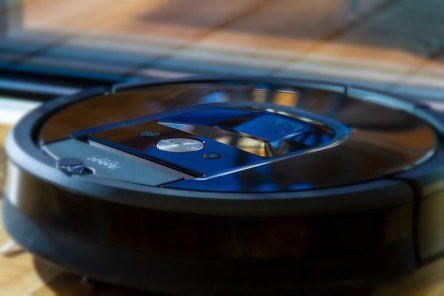One of the disadvantages of working in an open office space is that not everybody likes to clean up after themselves. Many have the bad habit of eating at their desk, so there will most definitely be crumbs on the carpet. Rainy days result in dirty shoes. Somebody celebrating their birthday can leave a trail of confetti on the floor and just like that, the whole space can be a mess in just a few minutes. But what do you do when you have a visit from your customers and the place needs to look sparkling clean, but the cleaning crew isn’t coming before they arrive? Robots Will Save Us This is when 21st century tech comes in handy. By using IoT technology, an intelligent robot vacuum cleaner concept was created for smart offices. Each of the robot vacuums has a different approach to cleaning. Some are methodical, while others may move around randomly, which can be a bit confusing, but in fact, they’re mapping the whole surface with in-built cameras or other smart sensors. Some of these devices are controlled via a mobile app that allows you to schedule the cleaning sessions and access status, battery and alerts through your phone, while others come with a remote control that allows you to direct the device to the exact spot you want them to clean. One such example of commercial indoor robotic vacuum designed specifically for office buildings is using an intelligent booking system in Outlook to schedule the automated services. The robot creates and updates its program in real time, considering existing bookings made in Outlook. In addition, the device analyzes when one room was booked and plans its next cleaning session so those conference rooms are always clean for the next meeting...
Customer Satisfaction...
For commercial real estate
Keeping tabs on customer satisfaction at an office building, retail center or apartment community is a never-ending task. Almost any encounter with a tenant or resident presents an opportunity to find out where the room for improvement exists. And there is no substitute for face-to-face contact when it comes to finding out what is on the customer’s mind. Whether the methods are highly structured or informal, gathering and assessing feedback has a single purpose at the core: attracting and keeping customers. To foster a systematic approach to evaluating customer satisfaction, many owners use surveys that are administered by the Kingsley Associates research firm. Tenants are asked to grade the property and its management team on a wide variety of topics, ranging from response time to service requests and quality of building maintenance to overall satisfaction and intentions to renew. Most owners and managers use about 80 percent of the standard survey template, but requests for customized questions are common, according to Kingsley. Owners and managers say that a standardized format allows them to review how properties in their own portfolios stack up against one another. If the scores for an individual property or a geographic area indicate tenant discontent, owners and third-party service providers expect the manager to devise and carry out a plan for improvement. Moreover, survey results frequently figure into the property manager’s performance review, providing an added incentive to raise the bar. Using a standardized, nationally distributed questionnaire also provides property owners and managers with a broader perspective on their performance. Once the decision is made to survey tenants or multi-family residents, getting maximum value from them is an art in itself. The first and probably most important step is identifying the appropriate person to complete the survey, which may be...


